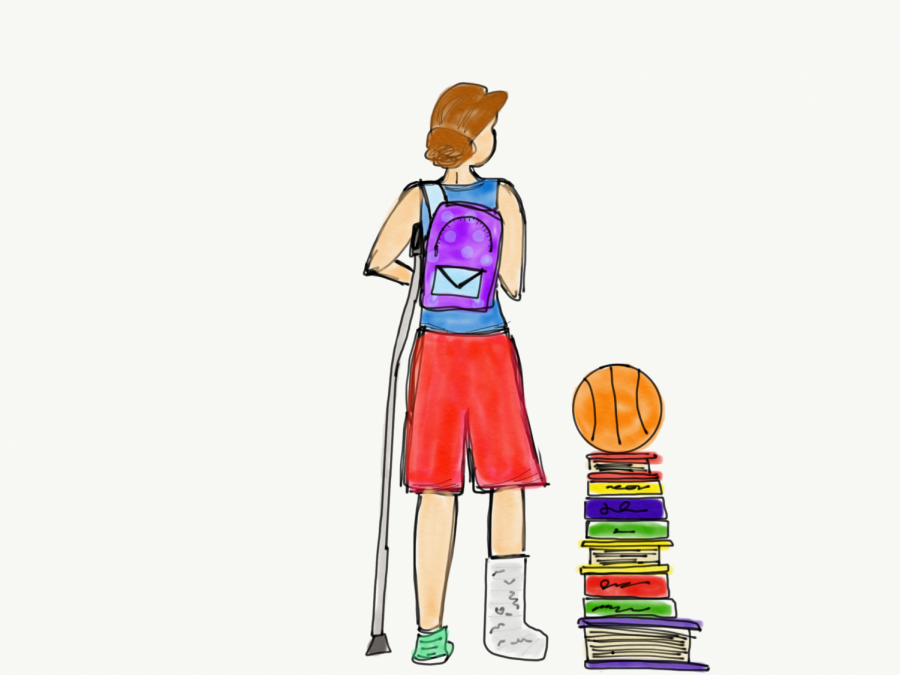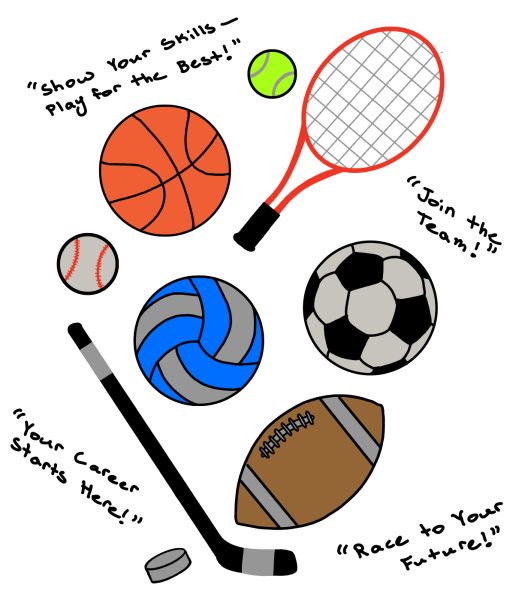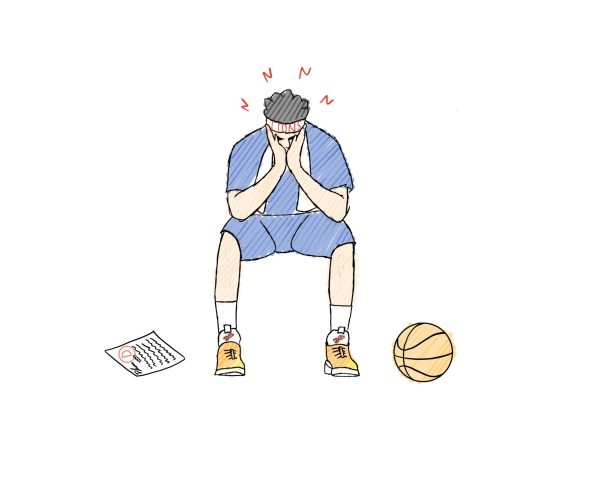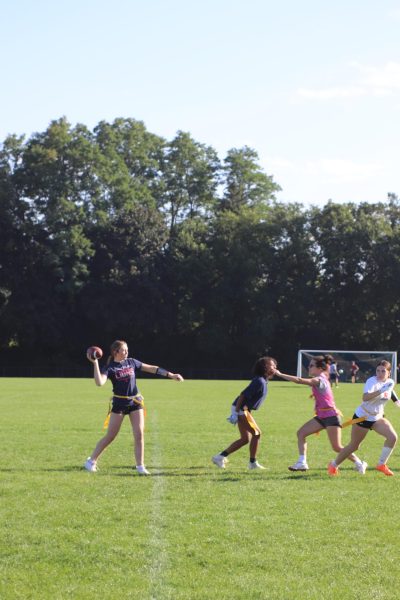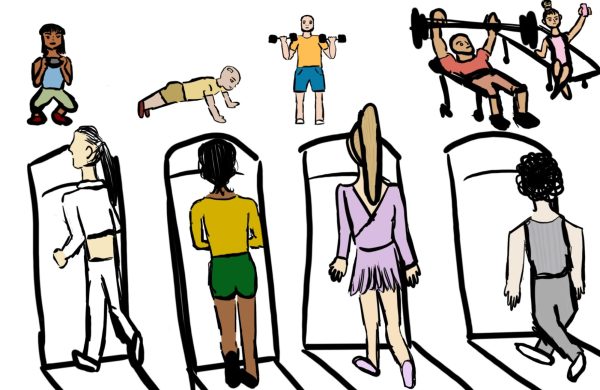Do procedures for injured student-athletes require rehab?
The whole crowd cringes. The player lies on the ground in agony. After the athlete is helped off the field, a visit to a doctor answers the pressing question on the athlete’s mind. When will I be able to play again? However, there is another concern that should be considered—how will the injury affect him in the classroom?
In every sport, athletes are at risk, whether it’s contact or non-contact.
“In non-contact, I see ankle sprains, bruises, and other sprains,” said athletic trainer Ms. Gina Garro. “Contact sports [result in] concussions, bruises, and sprains. Lots of ankle sprains.”
Students athletes endure many other injuries, but this does not stop them from attending school. Despite their attendance, it is physically and mentally difficult for an athlete to attend school after obtaining an injury. Even outside the classroom, the school itself provides difficulty for injured athletes.
“When I got hurt, it was hot in school and the hallways were slick, and sometimes I slipped on my crutches,” said senior Bridget DeZellar, who tore her ACL playing soccer.
In the classroom, injured students face challenges. Some students missed days of schools immediately after getting hurt and said they received no pity from teachers. “Teachers didn’t really help at all,” said DeZellar. “They expected me to keep up even though I missed so much.”
The injury itself distracts hurt student athletes from fully engaging in the class.
“It was hard to focus with my injury,” said freshman Andrew Shevlin, who broke his collarbone in a basketball practice.
“I had to leave class early because it would take me so long,” said DeZellar. ‘Sometimes, I had to leave school because my leg hurt so much.”
Despite all the hardships hurt student-athletes face, many find ways to keep hope and continue excelling—and offer advice to those experiencing injuries.
“Ask classmates for notes,” said DeZellar. “Try not to be self conscious about your brace, boot, crutches or whatever it is. Realize that you will eventually get back to where you originally were before you were hurt.”
The challenges injured student-athletes face poses the question: Should there be procedures for injured students?
There are accommodations for student athletes.
“We try and see that you have all the modifications you need,” said Doctor Deborah Scerbicke, dean of students. “You can go on the elevator, leave class early. Do we need to modify your homework? Do you need a wheelchair?”
As well, there is work towards preventing injuries by the athletic department.
“We have a great strength and conditioning program downstairs,” said Ms. Garro. “If teams go down their regularly, the injury decrease is noticeable.”
Constantly, updates are being made to keep up with national and international standards.
“Dealing with concussions we follow state law,” said Dr. Scerbicke. “We just updated to a new concussion protocol, and we follow international standards to do that.”
The system for helping injured student athletes is not always set in stone, and administration accepts it is not perfect.
“We are always trying to adapt to kids’ needs,” said Dr. Scerbicke, “We are always trying to do better. I’m being honest. I think we do pretty good.”
The athletic department works to keep athletes safe, but injuries occur. Injured student athletes return to school with many accommodations. However should there be more accommodations and protocols? Or are the procedures as updated as possible?
Your donation will support the student journalists of Saint Viator High School. Your contribution will allow us to purchase equipment and cover our annual website hosting costs.



